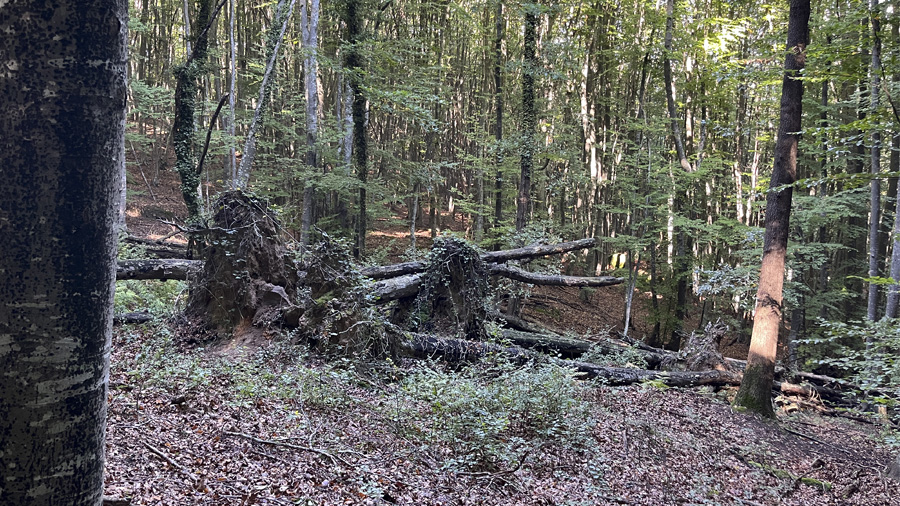Forests containing deadwood hold 23% more biodiversity
A 10-year research led by the UAB and CREAF analysed European red pine (Pinus sylvestris) forests in Catalonia affected by tree mortality events and now reveals that the deadwood in these forests is more varied and, therefore, also hosts greater biodiversity.

The research team found that forest stands affected by mortality contained 83% more deadwood, with more fallen or standing dead trees, and have 23% more different types of deadwood in different stages of decay. The key point is the diversity of habitats provided by these trees which are food, burrows or hiding places for many species of fauna and flora. Examples are woodpeckers, the polypore Phenillus robustus or the endangered beetle Rosalia alpina in beech forests. In addition, forests with deadwood also have a more complex structure and this offers a greater diversity of microenvironments that can make the forest more resistant to new stressful events.
“When trees die from drought, the deadwood they leave behind can become a lifeline for biodiversity. To study this further, in 2022 we visited 20 Scots pine forests that had suffered drought-related tree deaths about a decade ago. What we discovered was really interesting: nature had begun to come alive in these seemingly lifeless places. A quiet and remarkable transformation that reminds us that, given enough time, nature can find its way back to recovery,” says Faqrul Islam, CREAF researcher and first author of the study.
The study, published in Forest Ecology and Management, points out that the wettest locations, such as those in the Pyrenees, have the highest concentration of deadwood and are more diverse, although this situation is more ephemeral, since the humidity favours faster decomposition. And this is a complicated situation: if they do not appear again at the same speed, the microhabitats generated disappear.
However, decomposition is slower in colder or drier places such as more Mediterranean locations, where, despite having less deadwood, it decomposes little by little and can offer its benefits for longer. So the fauna and flora that depend on it, and that often cannot live in other places, will also remain active longer.
“When we talk about disturbances in ecosystems it is usually a basically anthropocentric view. We think about how it affects our economy or our well-being, or how the emotional bond we have with these ecosystems deteriorates. For ecosystems, on the other hand, these “disasters” are often part of their dynamics and are an opportunity to create new habitats. The problem arises when humans increase the intensity or frequency of these disturbances”, explains Francisco Lloret, author of the article, and researcher at CREAF and the UAB. This is demonstrated by the research, in which researchers analysed the deadwood generated precisely as a result of the great drought of 2012 in Catalonia. The UAB researcher emphasises that “it represented an opportunity for many of the affected forests, because new microhabitats have appeared from the deadwood that resulted from that drought”.
“This does not mean that the reiteration of drought episodes is positive, obviously. What our results show is that in some cases it may be interesting to maintain deadwood and retain some weakened trees to promote this heterogeneity in the structure of the forest and its biodiversity, while bearing in mind that this process will have different speeds depending on the local climate,” adds Josep Maria Espelta, also a CREAF researcher and author of the article.
Reference article: Chowdhury, F. I., Lloret Maya, F., Jaime, L., Margalef Marrasé, J., & Espelta Morral, J. M. (2024). Deadwood and Tree-related Microhabitat's abundance and diversity are determined by the interplay of drought-induced die-off and local climate. Forest Ecology and Management, 563, Article 121989. https://doi.org/10.1016/j.foreco.2024.121989